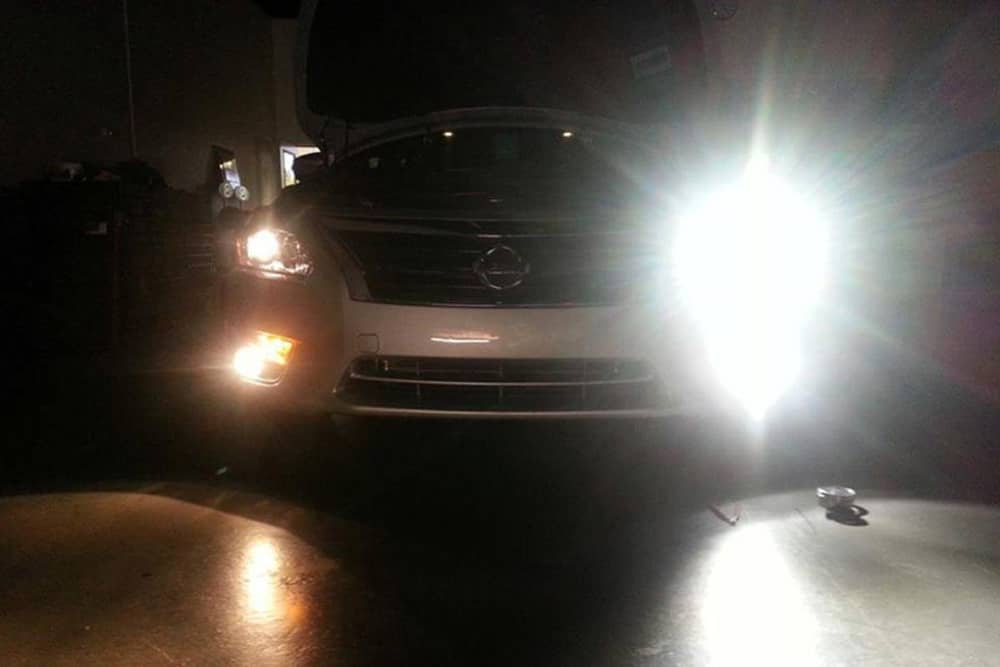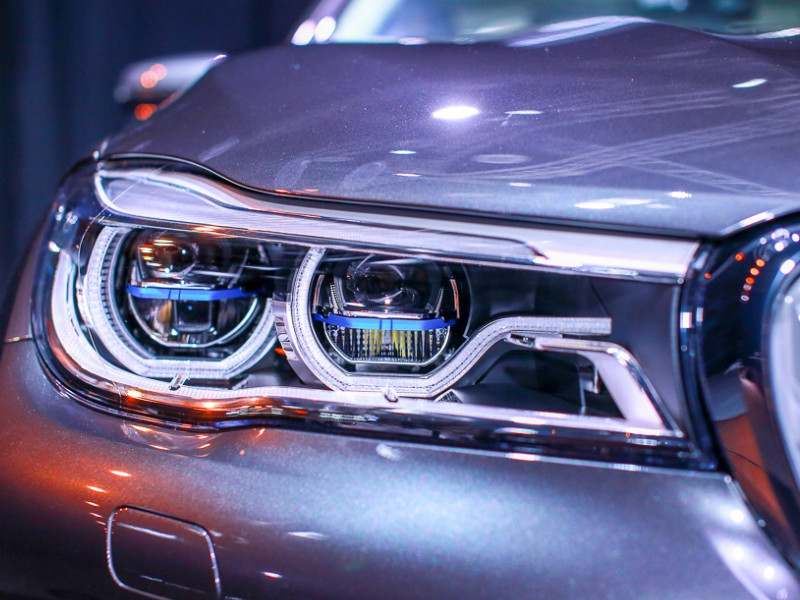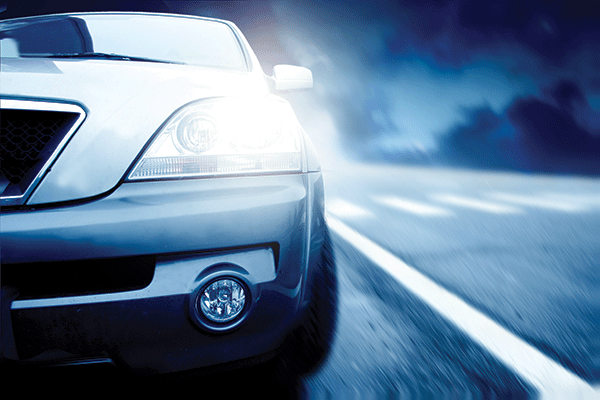Replacing a dead or dying car battery is one of the most frequent auto repairs. Nevertheless, drivers occasionally discover that their headlights are malfunctioning or not turning on at all after changing the battery. Why are your headlights not working after battery change?
Because the battery connections were not securely tightened during installation, a poor electrical connection was created that did not power all vehicle components. It’s also possible that the new battery was defective from the start. Moreover, after the battery was replaced, it’s possible that other unrelated electrical problems surfaced.
In any case, some basic troubleshooting is required to determine the root cause and restore the headlights. This will allow you to drive safely at night.

Contents
Reasons For Headlights Not Working After Battery Change
There are several reasons why headlights are not working after a battery replacement.
Loose Cable Connection
A loose or corroded cable connection is usually the cause of the problem, especially at the battery terminals. Vibration can reduce the clamping force after several battery changes. Checking cable ends and cleaning/tightening them as necessary is always the first step because poor connections impede power flow. It’s also possible that the new battery is defective. Rarely, but still possible, faulty batteries are packaged as “new.” Check the battery’s health by testing the voltage.
Faulty Wiring
Headlight-related hidden wiring problems may become visible after installing the new battery. As wire insulation ages, it can crack and cause circuit breaks or shorts. These trouble spots are occasionally disturbed by moving cables during installation. Check wiring looms for damage in detail. Furthermore, during work, a faulty switch module or blown fuses for headlight circuits may trip.
Mechanical Fault In The Headlight Relay
A mechanical fault in the headlight relay is a less common occurrence. This relay acts as a switch, directing current only where it is required. Testing for continuity and voltages aids in the diagnosis of such component failures. Using a battery that does not meet the vehicle’s cranking amps and power specifications can also result in incomplete charging.
Battery Change
Furthermore, if your vehicle has automatic headlights, the battery change may cause the sensor’s calibration to be disrupted. Specific voltage levels are required by these sensors. Any deviation caused by a battery replacement could result in erratic behavior or a complete failure of the automatic headlight function.
Blown Fuses
Blown fuses are another possible cause. A sudden surge of power during a battery change could blow a fuse, disrupting the electrical circuit that controls the headlights. Checking and replacing blown fuses is a quick way to restore functionality.
Broken Or Burned-Out Bulb
A broken or burned-out bulb could be the root of the headlight issue. While there may not be a direct connection between this and the battery change, coincidence in timing can still cause confusion. As part of the troubleshooting procedure, any defective bulbs should be inspected and replaced.
How To Fix Headlights Not Working After Battery Change?
Here are a few things you can try if you change your batteries and your headlights still don’t work:

Check the Headlight Switch
Verify that the headlight switch is positioned correctly. Sometimes the problem is as simple as forgetting to turn on the headlights.
Inspect Fuses
Look over the fuses for the headlights. One of the most common causes of headlight failure could be a blown fuse. To find the fuse box and examine the headlight fuse, consult the owner’s manual for your car. Any blown fuses should be replaced with fresh, equal-amperage fuses.
Verify Bulb Condition
Examine the headlight bulbs for indications of burnout or damage. Replace a faulty bulb with a new one if necessary. Coincidental bulb failure can occasionally happen right before a battery change.
Reset Automatic Headlight Systems
If the headlights on your car are automatic, consider resetting the system. To learn how to reset your car’s automatic headlights, consult the owner’s manual. Depending on the type of car, this procedure might change.
Check for Loose Wiring
Check the wiring that’s attached to the headlights for any broken or loose connectors. Ensure that there are no obvious signs of wear or damage and that all wires are firmly connected.
Inspect the Headlight Relay
Find the fuse box’s headlight relay. The relay might need to be replaced if it has obvious damage or exhibits symptoms of overheating. Check to see if the headlights function by replacing the headlight relay with a comparable one from a different function. If so, swap out the malfunctioning relay.
Perform a Battery Disconnect Reset
After disconnecting the car’s battery for a short while, reconnect it. This could assist in resetting the electronic systems of the car, such as the headlight circuit.
Consult a Professional Mechanic
You may consult with a qualified mechanic if you’ve tried these fixes and the problem hasn’t been fixed.
What Are The Symptoms Of A Bad Headlight Relay?

Your car’s headlights may not be working properly due to a malfunctioning headlight relay. The following are typical indicators of a malfunctioning headlight relay:
Headlights Flickering or Staying Off
Intermittent flickering or total headlight failure is one of the most obvious symptoms. The headlights may act erratically if the relay is unable to maintain a steady electrical connection.
Inoperative High or Low Beams
The loss of either the low beams or the high beams could be the consequence of a relay malfunction. This may result in decreased nighttime visibility and unsafe driving conditions.
Delayed Headlight Activation
After flipping the switch, you might notice a lag in the headlights turning on. A failing relay that is having trouble making a good connection is frequently the cause of this delay.
Stuck Headlights
The relay, on the other hand, could become stuck in the “on” position, which would keep the headlights on even when they are turned off. The vehicle’s battery may be depleted by this continuous illumination, which is unsafe.
Clicking Noises
When you try to turn on the headlights, if the fuse box or the relay click, there might be an issue. A relay that makes clicking noises may be having trouble engaging or disengaging.
Dim Headlights
A decrease in the amount of electricity reaching the headlight bulbs could be the cause of headlights that seem dimmer than usual. This might happen if a relay fails and is unable to supply the required voltage.
Multiple Electrical Issues
A malfunctioning headlight relay may cause additional electrical issues in the car in addition to affecting the headlights. Problems with additional lighting fixtures or electrical accessories may fall under this category.
Burning Smell
In severe situations, a burnt smell near the fuse box or relay may be an indication that something is malfunctioning and is overheating. A short circuit or an approaching failure could be indicated by overheating.